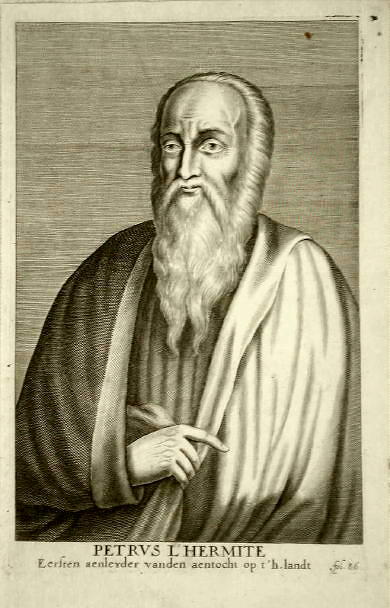"CATHOLIC ENCYCLOPEDIA:Crusades." New Advent: Home. Web. 6 Dec. 2009
http://www.newadvent.org/cathen/04543c.htm>
"The Christian Crusades:1095-1291." Global Ministries-General Board of General Ministries, United Methodist Church. Web. 7 Dec. 2009.
http://gbgm-umc.org/umw/bible/crusades.htm
"The Crusades." Middle Ages. Web. 7 Dec. 2009.
http://www.middle-ages.org.uk/the-crusades.htm>
"CRUSADES,." The History Channel-Home Page. Web. 7 Dec. 2009.
http://www.history.com/encyclopedia.do?articleId=206834>.
Glenco World History. New York: McGraw-Hill and Glenco. 2002. Print
Wednesday, December 9, 2009
The Final Straw
The last time the city of Jerusalem was held by Christian hands was when Emperor Frederick II recovered Jerusalem from the Muslims by signing a treaty. However in 1244 the Muslims took possesion for Jerusalem and have held it since. Crusading continued to happen, but as time passed more and more people began to lose enthusiasm in crusading. They stopped believing that they needed to focus on the lives they had right now and what was around them. So they soon just stopped all together. This is signifigant to history because it stopped all of the Crusades. It relates to other areas of history because it stopped popes from trying to keep creating Crusade after Crusade, and marked the end of an era of fighting between Muslims and Christians.
Important People to the Crusades


There were many important figures during the lasting years of the Crusades. However two men are some of the most renown. Their names were Frederick Barbarossa, and Peter the Hermit. Frederick Barbarossa was born the son of Duke Frederick of Swabia. He was born in the year 1122 and of Germanic decent. He later became the Roman Emperor and King of Germany all between the years of 1152-1190. Frederick is a famous person for his acts during the third Crusade. In 1187 the Muslims regained control over Jerusalem thus leading of Frederick to assemble an army of 125,000 to take to battle. He performed an amazing feat by defeating the Muslims in two giant battles. However his lead of his great army ended as he tried to cross a river with his horse and drowned. His actions were signifigant because he helped regain control over Jerusalem. Frederick Barbarossa relates to other areas of history because he was an emperor in the Roman Empire and a King in the Geman state. Peter the Hermit was born in 1050 as a frenchman. He was a monk in Amiens, France until he heard of Pope Urban II plans to overthrow the Muslims for Jerusalem and the Holy Lands. Peter the Hermit was famous for leading the very first Crusade, also known as "the people's Crusade". His first attepmt wasn't so successful as most of his infantry was killed. However he was part of the group that took Jerusalem. The signifigance of taking back Jerusalem was it put the Holy Lands back into Christian hands. It also relates to other history because it was part of the cause that started the fourth Crusade.
The One that Started it All

To begin the year is 1065, and the holy city of Jerusalem and nearby areas are overwhelmed and have become under control of eastern Turks. Then in the year 1096 the pope who at the time was Pope Urban II held a meeting which started the Crusades. The meeting was so impressive as there was thousands of people who joined the cause to take back the holy lands. So a group of 25,000 or 30,000 people meet in Constantinople to make the march to Jerusalem and the rest of the east. The seizure of the east started with the control of Antioch in 1098. Then in June of 1099 the attempt of Jerusalem started. Although the mission was a success there was massive bloodshed of Christians by the invading Muslims. Thus the victory of the 1st Crusade was accomplished and the major objective was complete. Had this Crusade not happened then the whole Christian religion may have been damaged beyond repair and not be the powerhouse it is today. In a related note had the Muslims held Jerusalem then the Islamic religion would dominate the world today. The Crusades related to a lot during the time period. For most it occured during the Middle Ages. It also established the foot hold for Christianity to becoming liked by many people during the time.
Subscribe to:
Posts (Atom)
